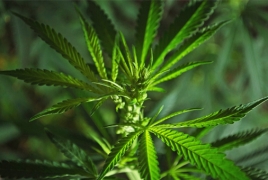Earliest evidence for cannabis use discovered in ancient tombs June 13, 2019 - 14:33 AMT PanARMENIAN.Net - The earliest direct evidence for human consumption of cannabis as a drug has been discovered in a 2,500-year-old cemetery in Central Asia, according to a research paper published today in in the journal Science Advances, National geographic reports. While cannabis plants and seeds have been identified at other archaeological sites from the same general region and time period—including a cannabis ‘burial shroud’ discovered in 2016—it’s been unclear in each context whether the versatile plant was used for psychoactive reasons or for other ritual purposes. An international team of researchers analyzed the interiors and contents of 10 wooden bowls excavated from burials at Jirzankal Cemetery, a site on the Pamir Plateau in what is now far-western China. The bowls contained small stones that had been exposed to high heat, and archaeologists identified them as braziers for burning incense or other plant matter. When chemical analysis of the braziers revealed that nine of the ten once contained cannabis, the researchers compared the chemical signature of the samples against those of cannabis plants discovered 1,000 miles to the east at Jiayi Cemetery, in burials dating from the eighth to the sixth century B.C. They saw that the Jirzankal cannabis had something the Jiayi hemp did not: Molecular remnants of tetrahydrocannabinol, or THC—the chemical responsible for cannabis’ psychoactive effects. The strain of cannabis found at Jiayi does not contain THC, and would have been primarily been used as a source of fiber for clothing and rope, as well as nutrient-rich oilseed. The Jirzankal cannabis features higher levels of mind-altering compounds than have yet been found at any ancient site, suggesting that people could have been intentionally cultivating certain strains of cannabis for a potent high, or selecting wild plants known to produce that effect. Cannabis is known for its “plasticity,” or ability for new generations of plants to express different characteristics from earlier generations depending on exposure to environmental factors such as sunlight, temperature, and altitude. Wild strains of cannabis growing at higher altitudes, for instance, can have a higher THC content. Authorities said a total of 192 Azerbaijani troops were killed and 511 were wounded during Azerbaijan’s offensive. In 2023, the Azerbaijani government will increase the country’s defense budget by more than 1.1 billion manats ($650 million). The bill, published on Monday, is designed to "eliminate the shortcomings of an unreasonably broad interpretation of the key concept of "compatriot". The earthquake caused a temporary blackout, damaged many buildings and closed a number of rural roads. Partner news |